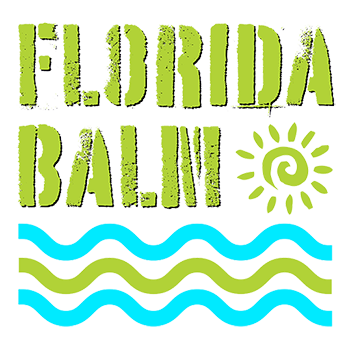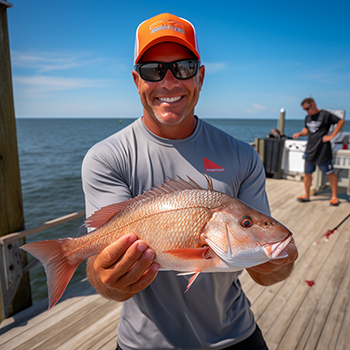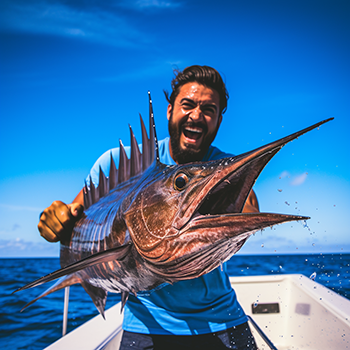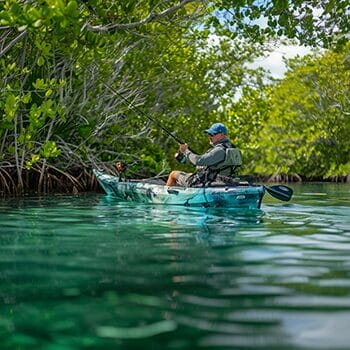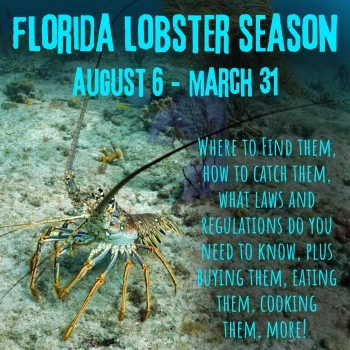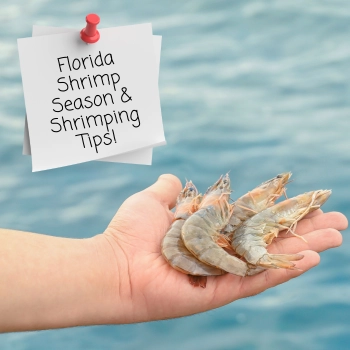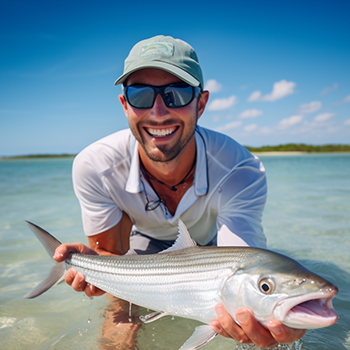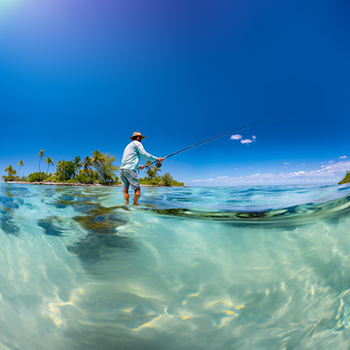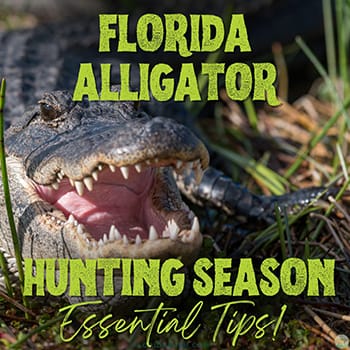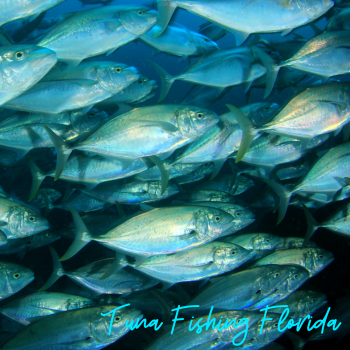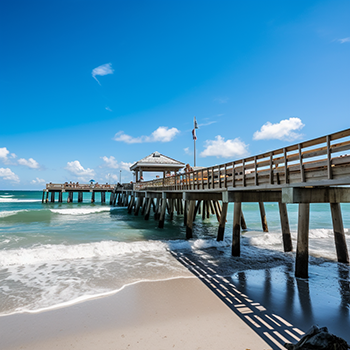
Florida Fishing Seasons
A Guide to Year-Round Angling Adventures
Florida fishing seasons serve as a comprehensive guide for what types of fish to catch, when, and how. Whether you live in Florida or are planning to visit, fishing is a great way to enjoy the outdoors, spend quality time with family, or catch your next healthy meal.
There’s an abundance of fish species to target throughout the year, whether freshwater lakes, the ocean or brackish mangrove channels. Whether fishing from a beach, a pier, kayak, or boat, we’ve got tips for making the most of your angling adventure including best months to which types of fish!
Let’s delve into what you need to know about Florida’s fishing seasons, the different habitats to fish in, types of fish to target, plus tips to maximize your fishing adventure success!

What Type of Fishing Would You Like to Do?
Before diving into Florida fishing seasons and types of fish to catch, how do you want to fish? Just remember, you need a license for most types of fishing activities (we’ve got the links and info you need below, Florida makes it easy to comply).
- Offshore Fishing
- Nearshore Fishing
- Backcountry Fishing
- Beach Fishing
- Pier Fishing
As an Amazon Associate I earn from qualifying purchases at no additional cost to you.
Offshore Fishing
Offshore fishing involves venturing into deeper waters, typically beyond the reef line or continental shelf, to target larger pelagic species like marlin, mahi-mahi, tuna, and sailfish.
Nearshore Fishing
Nearshore fishing takes place in waters closer to the shore, usually within a a mile or two of the coastline. It’s ideal for targeting species like kingfish, snapper, grouper, and tarpon.
Backcountry Fishing
Backcountry fishing or flats fishing occurs in shallow, often brackish or freshwater areas such as bays, estuaries, and mangrove-lined channels. Anglers pursue species like redfish, snook, trout, and bonefish in these habitats.
Beach Fishing
Beach fishing is a popular option for anglers looking to catch species like pompano, snook, redfish, and even sharks! It offers a relaxed and accessible way to enjoy the sport but you’ll want to pick a remote beach or island to fish from.
Pier Fishing
Pier fishing is very popular in coastal towns in Florida that have a long pier and allow fishing. Some of these piers sell bait and supplies, but most you’ll want to bring everything you need and stake out your spot early in the day.
Depending on the pier and depth of the water below, there are a variety of fish you can expect to be present including snapper, sheepshead, Spanish mackerel, and tarpon and it’s just a matter of your fishing skills on whether they’ll take your bait and let you catch them!
Check out our blog on best Florida Fishing Piers here!
Florida Fish and Wildlife Conservation Commission (FWC)
Florida Fish and Wildlife Conservation Commission website offers lots of information on fishing and hunting activities, and the licenses/permits required as well as regulations and rules for these outdoor activities.
Though licenses and permits are required for both residents and non-residents, there are some exemptions. The cost is minimal, as low as $17 for the year and other options like 5-year and lifetime licenses are also available.
If you’d like to save money, you can plan to fish during the License-free Fishing Days.
You can purchase your fishing or hunting recreational license online at the Official Florida Fishing and Hunting Licenses at through gooutdoorsflorida.com.
Florida Fishing Seasons (South Florida and North Florida)
Florida’s fishing seasons are influenced by temperature variations, weather patterns, and the migratory behaviors of fish species. Here’s a breakdown of what to expect throughout the year specific to South Florida and North Florida, and if you’ll be fishing in the central part of Florida consider a mid-range of both.
Winter (December - February)
South Florida & The Keys: Mild winters make for excellent fishing conditions, with opportunities to catch sailfish, kingfish, wahoo, and blackfin tuna offshore. Inshore, snook, redfish, and seatrout remain active in the warmer backcountry waters.
North Florida & The Panhandle: Cooler temperatures may slow down inshore fishing, but offshore anglers can target species like amberjack, grouper, and hogfish. Sheepshead and black drum are popular nearshore targets.
Spring (March - May)
South Florida & The Keys: Spring marks the beginning of sailfish and mahi-mahi season, with peak activity offshore. Nearshore waters see an increase in king mackerel and cobia. Inshore, tarpon and permit become prime targets.
North Florida & The Panhandle: Spring brings warmer temperatures and increased fishing activity. Red snapper season opens offshore, while inshore anglers can target speckled trout, flounder, and Spanish mackerel.
Summer (June - August)
South Florida & The Keys: Summer is prime time for offshore fishing, with marlin, tuna, and mahi-mahi abundant in the warm Gulf Stream waters. Inshore, anglers can target snook, tarpon, and bonefish.
North Florida & The Panhandle: Offshore anglers can target species like grouper, amberjack, and king mackerel. Inshore, redfish and speckled trout remain active, while scallop season opens in some areas.
Fall (September - November)
South Florida & The Keys: Fall brings cooler temperatures and a resurgence of activity in both offshore and inshore waters. Sailfish begin their annual migration, while nearshore reefs teem with snapper and grouper.
North Florida & The Panhandle: Fall is a transitional period, with offshore anglers targeting species like mahi-mahi and kingfish. Inshore, redfish and flounder become more active as water temperatures cool.
Tips for Planning a Florida Fishing Trip
- Research local regulations and licensing requirements before your trip (links below for information and purchasing permits/licenses)
- Monitor weather conditions and plan accordingly, especially for offshore excursions.
- Consider hiring a local guide or charter boat for specialized knowledge and access to prime fishing spots.
- Pack essential gear such as sunscreen, polarized sunglasses, and plenty of water.
- Take advantage of local bait shops for up-to-date fishing reports and recommendations.
Bonus Tip: Shrimping!
Shrimping is a fun and family-friendly activity that can be done while standing in shallow water, from a dock or canoe or boat. Grab a headlamp and net and scoop up the shrimp as they’re running (swimming) through the current at night. Your headlight (or flashlight) will reflect off their eyes making scooping them up in your net a fun activity, even your young children will enjoy.
The trick (in our opinion) to the best shrimping experience? Find a swift flow of water where you can shine your headlamp and spot their glowing red eyes coming towards you, and use a net to scoop them up! We like shrimping in winter when the water temperature has dropped a few degrees, the shrimp seem to be bigger and “running” much more.
The best shrimping is achieved when there’s an outgoing tide with a swift water current. Best shrimping months depends on the region of Florida, but generally cooler months make for the best sized shrimp and more to catch. Many shrimpers will also watch for a full moon which seems to increase the number of shrimp “running”.
Shrimping also needs a fishing permit (license), see the official website below for lots of helpful information.

Florida Recreational Saltwater Fishing License
The FWC (Florida Fish and Wildlife Commission) make it easy to purchase the required fishing permit(s) and provides plenty of information on following the rules and regulations: Saltwater Recreational Saltwater Fishing License website here.
